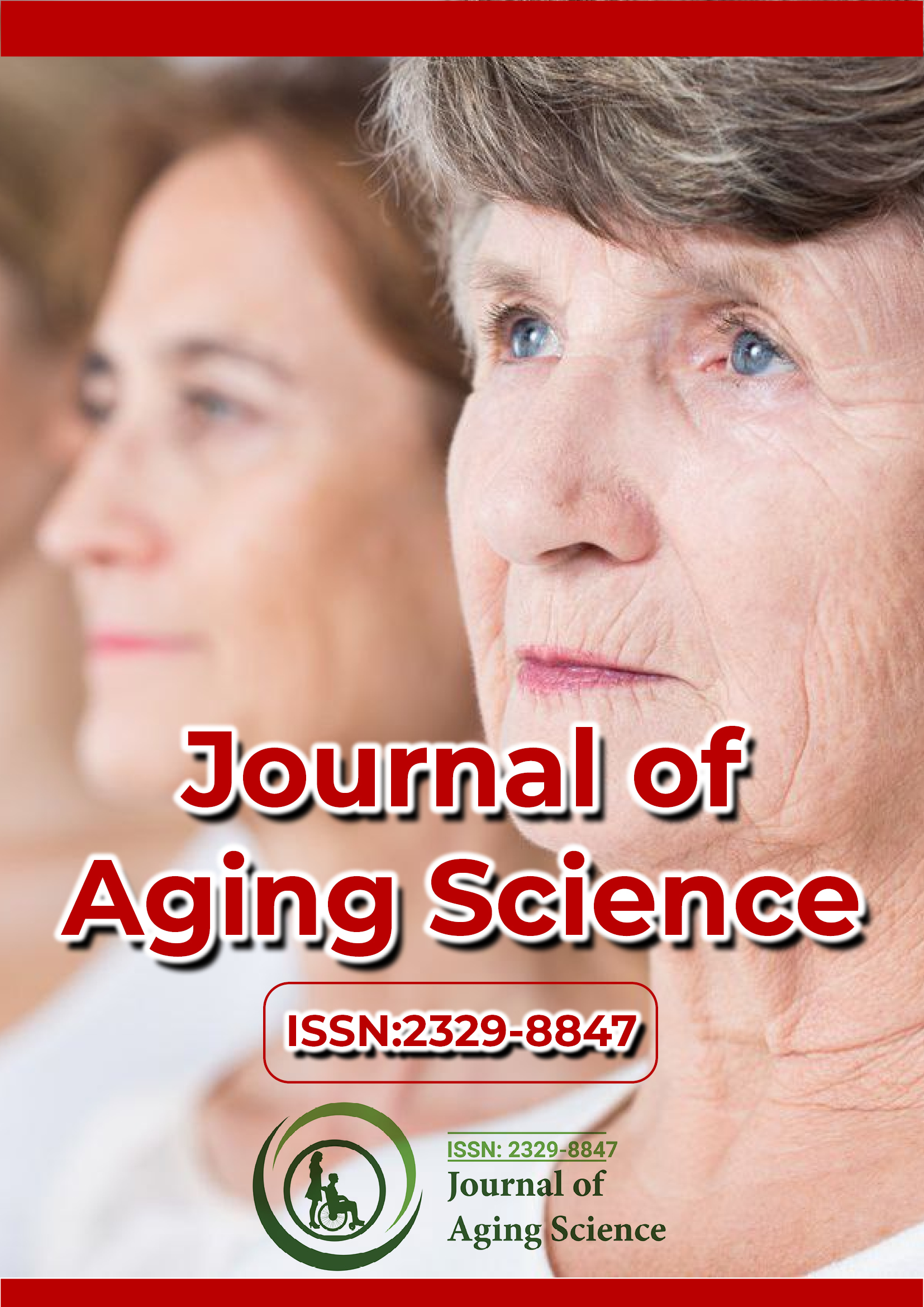PMC/PubMed Indexed Articles
Indexed In
- Open J Gate
- Academic Keys
- JournalTOCs
- ResearchBible
- RefSeek
- Hamdard University
- EBSCO A-Z
- OCLC- WorldCat
- Publons
- Geneva Foundation for Medical Education and Research
- Euro Pub
- Google Scholar
Useful Links
Share This Page
Journal Flyer

Open Access Journals
- Agri and Aquaculture
- Biochemistry
- Bioinformatics & Systems Biology
- Business & Management
- Chemistry
- Clinical Sciences
- Engineering
- Food & Nutrition
- General Science
- Genetics & Molecular Biology
- Immunology & Microbiology
- Medical Sciences
- Neuroscience & Psychology
- Nursing & Health Care
- Pharmaceutical Sciences
Commentary - (2022) Volume 0, Issue 0
Age-Related Problems Among the Older Adults
Benjialniosi Wensi*Received: 25-May-2022, Manuscript No. JASC-22-17364; Editor assigned: 27-May-2022, Pre QC No. JASC-22-17364(PQ); Reviewed: 10-Jun-2022, QC No. JASC-22-17364; Revised: 16-Jun-2022, Manuscript No. JASC-22-17364(R); Published: 24-Jun-2022, DOI: 10.35248/2329-8847-22.S12.005
About the Study
As they age they are more likely to have multiple diseases at the same time. Older adults are also more likely to develop agerelated diseases that younger people usually don't develop. High blood pressure can be a problem between generations but problems like cardiovascular disease, ischemic heart disease, urinary incontinence, vascular dementia, multiple sclerosis and others are more common. A lot in the elderly it is normal to have physical health difficulties as you get older. Although everyone ages somewhat differently some changes are the result of internal processes from the ageing processes itself. Thus although such changes are undesirable they are considered normal and are sometimes referred to as pure aging. For example, as people age the lens thickens, hardens and becomes less able to focus on nearby objects such as reading material such condition called as presbyopia. This change occurs in almost all older people. Thus presbyopia is considered normal aging. Other terms used to describe these changes are habitual ageing and senescence. Here are some of the most common health problems older adults faces.
Health problems
The heart is one of the most important organs in the body with the function of pumping blood to different parts of the body. Aging can lead to changes in the heart and blood vessels increasing the risk of heart disease [1]. This category includes chronic ischemic heart disease, congestive heart failure, and arrhythmias. Ischemic heart disease may be underdiagnosed in the very elderly. High blood pressure and high cholesterol need to be managed properly and heart care is essential to avoid developing heart disease.
Arthritis causes joint pain and chronic inflammation. The prevalence of osteoarthritis is higher in women than in men. Obesity is a risk factor for osteoarthritis and as the population ages rates of severe hip and knee arthritis increase [2].
Rheumatoid arthritis is an autoimmune disease in which the immune system attacks the lining of the joints. Conditions such as osteoarthritis, rheumatoid arthritis and muscle aches are common in older people. Eat enough foods rich in calcium and vitamin D so you never run out of these nutrients. Getting enough sunlight, exercising regularly and eating healthily can help protect your bones and joints.
Chronic Kidney Failure (CKD) is quite common in older adults. There are a number of other medical conditions that affect the kidneys and can lead to chronic kidney disease. These conditions include kidney infections, diabetes and nephritis. This condition affects the kidneys and can lead to kidney failure for which there is currently no cure [3]. Another unfortunate fact is that the first symptoms often do not appear instead the condition is often identified by urinalysis tests indicated for other medical conditions.
High blood sugar can have serious long-term health effects and can also lead to kidney disease, heart disease and more [4]. The risk of diabetes increases with age. Type 2 diabetes occurs when the body doesn't produce enough insulin or the insulin it makes doesn't work properly. This is when the pancreas is no longer able to produce the proper amount of insulin.
Diabetic retinopathy damages the retina leading to vision loss. Treatments for amblyopia vary depending on the cause. It is normal for your vision to deteriorate as you age. It can be more difficult to focus on close objects. You may be more sensitive to glare. Cataracts are cloudy areas that cover all or part of the lens of your eye. Cataracts block the lens and keep you from seeing [5]. They usually form slowly causing pain, redness or tearing.
Memory impairment and cognitive problems which occur when brain cells are damaged or lose connections between cells cause them to die. The most common form of dementia is Alzheimer's disease. Vascular dementia is another form of dementia that develops as a result of a stroke or damage to blood vessels.
REFERENCES
- Salvi SM, Akhtar SM, Currie Z. "Ageing changes in the eye." Postgrad Med J. 2006;82(971):581-587.
[Crossref], [Google scholar], [PubMed]
- Donini LM, Savina C, Cannella C. Eating habits and appetite control in the elderly: the anorexia of aging. Int Psychogeriatr. 2003;15(1):73-87.
[Crossref], [Google scholar], [PubMed]
- Kohijoki, Anna-Maija. "The effect of aging on consumer disadvantage in grocery retail services among the Finnish elderly." J Retail Consum Serv. 2011;18(4):370-377.
[Crossref], [Google scholar]
- Campisi J, Kapahi P, Lithgow GJ, Melov, Newman JC, Verdin E. From discoveries in ageing research to therapeutics for healthy ageing. Nature. 2019;571(7764):183-192.
[Crossref], [Google scholar], [PubMed]
- Atkinson, Roland M. "Aging and alcohol use disorders: Diagnostic issues in the elderly." Int Psychogeriatr.1990; 2(1):55-72.
[Crossref], [Google scholar], [PubMed]
Citation: Wensi B (2022) Age-Related Problems Among the Older Adults. J Aging Sci. S12:005.
Copyright: �© 2022 Wensi B. This is an open access article distributed under the terms of the Creative Commons Attribution License, which permits unrestricted use, distribution, and reproduction in any medium, provided the original author and source are credited.

